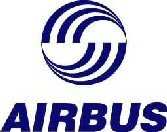Fri, Jul 03, 2009
Plane Struck Belly-First At Very High Speed
 The French agency
investigating the Air France 447, which crashed in the Atlantic
Ocean June 1st, says the aircraft impacted the water intact, belly
first, at a very high rate of speed, the World Associated Press
reported Thursday.
The French agency
investigating the Air France 447, which crashed in the Atlantic
Ocean June 1st, says the aircraft impacted the water intact, belly
first, at a very high rate of speed, the World Associated Press
reported Thursday.
Alain Bouillard who is leading the probe for the French accident
agency BEA said that one month after the crash, "we are very far
from establishing the causes of the accident."
While the pitot tubes on the A330 that have been the focus of
intense speculation in this incident, and others under
investigation by the NTSB, they were not cited as the cause of the
disaster. "It is an element but not the cause," Bouillard told a
news conference in Le Bourget outside Paris. "The investigation is
a big puzzle," he continued. "Today we only have a few pieces of
the puzzle which prevents us from even distinguishing the photo of
the puzzle."
 The heavy storms and
lightning in the area of AF447 were also downplayed in Bouillard's
presentation. Meteorological data show the presence of storm clouds
in the area the jet would have flown through, but nothing out of
the ordinary for the equatorial region in June, Bouillard said,
eliminating the theory that the plane could have encountered a
storm of unprecedented power. Other flights through the area
shortly after Flight 447 disappeared didn't report unusual weather,
Bouillard said.
The heavy storms and
lightning in the area of AF447 were also downplayed in Bouillard's
presentation. Meteorological data show the presence of storm clouds
in the area the jet would have flown through, but nothing out of
the ordinary for the equatorial region in June, Bouillard said,
eliminating the theory that the plane could have encountered a
storm of unprecedented power. Other flights through the area
shortly after Flight 447 disappeared didn't report unusual weather,
Bouillard said.
The initial report from BEA concluded in part:
- The meteorological situation was typical of that encountered in
the month of June in the inter-tropical convergence zone.
- There were powerful cumulonimbus clusters on the route of
AF447. Some of them could have been the center of some notable
turbulence.
- Several airplanes that were flying before and after AF447, at
about the same altitude, altered their routes in order to avoid
cloud masses.
- Twenty-four automatic maintenance messages were received
between 2 h 10 and 2 h 15 via the ACARS system. These messages show
inconsistency between the measured speeds as well as the associated
consequences.
- Visual examination showed that the airplane was not destroyed
in flight. It appears to have struck the surface of the sea in a
straight line with high vertical acceleration.
The report does not call for a grounding of all Airbus long haul
jets.
The search continues for the voice and cockpit data recorders
from the plane, but they are only designed to emit a signal for
about a month after being activated.
More News
NASA Takes in Orion, Begins Launch Processing for a Crewed Mission Aerospace giant Lockheed Martin recently turned in its share of the Artemis II venture, delivering its Orion spac>[...]
During The Forced Landing, The Airplane Landed Short Of The Runway And Left Of The Runway Centerline Analysis: The pilot reported that, during the initial climb, the engine lost pa>[...]
From 2010 (YouTube Edition): Company Pioneers Alternatives For Bell 206 TR Blades The approved part replacement business can be a tough one... especially when you're competing with>[...]
Obstacle An existing object, object of natural growth, or terrain at a fixed geographical location or which may be expected at a fixed location within a prescribed area with refere>[...]
“NATA’s 3,700 member companies operate at nearly 4,500 airports in thousands of communities across the nation, providing air transportation services, driving economic g>[...]
 Lockheed Hands Over Completed Artemis II Spacecraft
Lockheed Hands Over Completed Artemis II Spacecraft NTSB Final Report: Pulsar Super Pulsar
NTSB Final Report: Pulsar Super Pulsar Classic Aero-TV: Van Horn Rotor Blades -- Tail Rotor Replacements For Bell's 206
Classic Aero-TV: Van Horn Rotor Blades -- Tail Rotor Replacements For Bell's 206 ANN's Daily Aero-Term (05.02.25): Obstacle
ANN's Daily Aero-Term (05.02.25): Obstacle Aero-News: Quote of the Day (05.02.25)
Aero-News: Quote of the Day (05.02.25)




